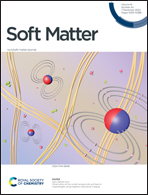Numerical simulation of transport and adhesion of thermogenic nano-carriers in microvessels
Abstract
Externally triggered thermogenic nanoparticles (NPs) are potential drug carriers and heating agents for drug delivery and hyperthermia. A good understanding of the transport and adhesion behaviors of NPs in microvessels is conducive to improving the efficiency of NP-mediated treatment. Given the thermogenesis of NPs and interactions of NP–blood flow, NP–NP, NP–red blood cell (RBC) and ligand–receptor, the movement of NPs in blood flow was modeled using a hybrid immersed boundary and coupled double-distribution-function lattice Boltzmann method. Results show that the margination probability of NPs toward the vessel wall was evidently increased by NP thermogenesis owing to the noticeable variation in blood flow velocity distribution, thereby enhancing their adhesion to the target region. NP–RBC collision can promote NP movement to the acellular layer in microvessels to increase the NP adhesion rate. The number of adhered smaller NPs was larger than that of the larger NPs having the same ligand density due to the enhancement of Brownian force although their adhesion was relatively less firm. Compared with the NPs with a regular shape, the irregularly shaped NPs can adhere to the vessel wall more readily and strongly as a result of the higher turbulence levels caused by NP–blood flow interaction and relatively higher ligand density, which led to a higher rate of NP adhesion.



 Please wait while we load your content...
Please wait while we load your content...